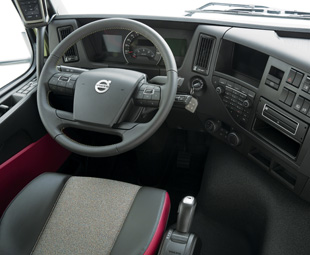The automated choice

Many truck manufacturers in South Africa are now fitting automated manual transmissions (AMTs) as standard equipment in their vehicles. But are they the correct choice for all vehicle applications?
The answer to this question was hotly debated at a recent Institute for Transport Engineers’ meeting. The panel of experts, who were the guest speakers at the meeting, were all highly qualified transport engineers and operators with the experience of utilising both automated and manual transmissions in heavy-duty vehicle applications.
The first comment was that automated transmissions are not suitable for all operational applications, especially if the vehicle is operating outside the borders of South Africa. This is because the availability of parts for these high-tech transmissions and the expertise to maintain and diagnose problems are very limited in these remote areas.
A lively discussion then followed regarding the suitability of operating automated transmissions in rough operating conditions. The panel of experts, and a good number of transport engineers at the meeting, finally agreed that many of the early AMTs were problematic when operated in rough conditions.
They concluded, however, that the latest models are far more durable and, if driven and maintained correctly, could be used in rough operating conditions, provided that the area of operation is correctly inspected by the selling dealer and the operator, and that the correct vehicle specification is selected for the application.
The use of automated transmissions fitted to large vehicles operating in local distribution applications – where the vehicles are continuously operating in heavy traffic and are required to reverse into docking bays – was also discussed. The operators currently using vehicles in these conditions said that they had found that vehicles fitted with fully automatic transmissions are better suited to this type of work.
Both the panel and many of the transport operators agreed that, for long-haul operations, AMTs are the correct choice and offer many advantages – provided that the driver is correctly trained on how to operate the transmission.
The advantages of operating an automated transmission in long haul are:
• Better fuel consumption;
• Extended life of vehicle components;
• Better braking and control of the vehicle; and
• Better power distribution through the drive-line.
The disadvantages are:
• Expensive electrical components; and
• Specialised maintenance skills are needed.
One of the benefits, that truck manufacturers and dealers use to convince potential buyers to buy their product, is that a vehicle fitted with an AMT is so easy to drive that it can be driven by anyone. This statement is true, but, as mentioned, the benefits to the operator will be eroded by an unprofessional driver, especially on the bigger rigs.
To summarise the findings of the
meeting:
• Driver training is a vital necessity if you want to enjoy the full benefits that automated transmissions offer and reduce the risk of expensive repairs.
• Truck dealers and operators need to ensure that they select the right vehicle for the job.
• In short-distance, stop/start operations, where vehicles are required to back up to docking stations, vehicles fitted with fully automatic transmissions are preferred.
One of this country’s most respected commercial vehicle industry authorities, VIC OLIVER has been in this industry for 49 years. Before joining the FOCUS team, he spent 15 years with Nissan Diesel (now UD Trucks), 11 years with Busaf and seven years with International.
Published by
Focus on Transport
focusmagsa




